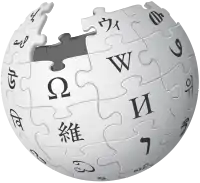well-order
English
Alternative forms
- well order
Noun
well-order (plural well-orders)
- (set theory, order theory) A total order of some set such that every nonempty subset contains a least element.
- 1986, G. Richter, Noetherian semigroup rings with several objects, G. Karpilovsky (editor), Group and Semigroup Rings, Elsevier (North-Holland), page 237,
-
is well-order enriched iff every morphism set
carries a well-order
such that
- for every .
-
is well-order enriched iff every morphism set
carries a well-order
such that
- 2001, Robert L. Vaught, Set Theory: An Introduction, Springer (Birkhäuser), 2nd Edition, Softcover, page 71,
- Some simple facts and terminology about well-orders were already given in and just before 1.8.4. Here are some more: In a well-order A, every element x is clearly of just one of these three kinds: x is the first element; x is a successor element - i.e., x has an immediate predecessor; or x is a limit element - i.e., x has a predecessor but no immediate predecessor. The structure (∅, ∅) is a well-order.
- 2014, Abhijit Dasgupta, Set Theory: With an Introduction to Real Point Sets, Springer (Birkhäuser), page 378,
- Definition 1226 (Von Neumann Well-Orders). A well-order is said to be a von Neumann well-order if for every , we have (that is is equal to the set consisting of its predecessors).
- Clearly the examples listed by von Neumann above, namely
- are all von Neumann well-orders if ordered by the membership relation " ," and the process can be iterated through the transfinite. Our immediate goal is to show that these and only these are the von Neumann well-orders, with exactly one von Neumann well-order for each ordinal (order type of a well-order). This is called the existence and uniqueness result for the von Neumann well-orders.
- 1986, G. Richter, Noetherian semigroup rings with several objects, G. Karpilovsky (editor), Group and Semigroup Rings, Elsevier (North-Holland), page 237,
Synonyms
- (type of total order): well-ordering
Hypernyms
- (type of total order):
Verb
well-order (third-person singular simple present well-orders, present participle well-ordering, simple past and past participle well-ordered)
- (set theory, order theory, transitive) To impose a well-order on (a set).
- The set of positive integers is well-ordered by the relation ≤.
- 1950, Frederick Bagemihl (translator), Erich Kamke, Theory of Sets, 2006, Dover (Dover Phoenix), page 111,
- Starting from these special well-ordered subsets, it is then possible to well-order the entire set.
- 1975 [The Williams & Wilkins Company], Dennis Sentilles, A Bridge to Advanced Mathematics, Dover, 2011, page 182,
- To carry the analogy a bit further, the axiom of choice implies the ability to well order any set.
- 2006, Charalambos D. Aliprantis, Kim C. Border, Infinite Dimensional Analysis: A Hitchhiker's Guide, Springer, 3rd Edition, page 18,
- Then is a well defined order on , and belongs to (that is, well orders ) and is an upper bound for .
See also
Further reading





This article is issued from Wiktionary. The text is licensed under Creative Commons - Attribution - Sharealike. Additional terms may apply for the media files.